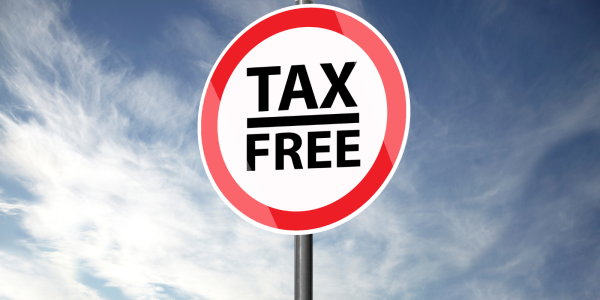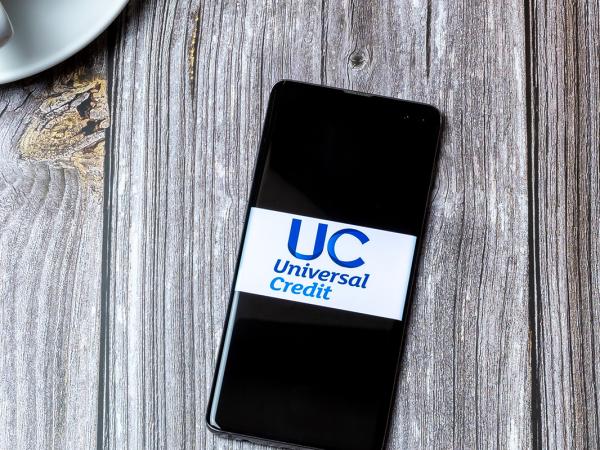Are you making the most of tax-free and tax-efficient ways of saving in the UK?
As more people are having to pay tax on their investment income, here we remind you of some tax-free and tax efficient savings options that may be available to you.

The personal savings allowance, introduced in April 2016, allows most people to earn £1,000 of savings income, like bank or building society interest, before having to pay tax. Recent increases in interest rates mean that some people will now exceed £1,000 in savings income, meaning they may have to pay tax on it.
The dividend allowance, also introduced in April 2016, has been reduced over the years from £5,000, to £2,000, to £1,000, and in 2024/25 is now £500. Going forward, people with even modest shareholdings may receive dividends more than £500 in a tax year and may have to pay tax on this income.
Moreover, most savings income and dividends do not have tax deducted at source, which means that the onus is on you to tell HMRC about the income and pay tax on it, as necessary. Yet there is complexity and confusion surrounding how you do this.
Putting all this together, you might be wondering whether there are any other options! Although we cannot offer financial advice, the good news is there are certain tax-free and tax-efficient savings and investment options available that you may want to consider. These include:
- Individual Savings Accounts (ISAs)
-
ISAs offer a tax-efficient way to save or invest. Cash ISAs provide tax-free interest, while Stocks and Shares ISAs allow investments to grow free from capital gains tax and income tax. Each tax year, you can contribute up to £20,000 across all your ISAs.
If you have cash savings that you want to transfer into an ISA then there are no tax implications of moving cash to a new account in this way. However, if you have stocks and shares that you would like to transfer into a Stocks and Shares ISA, it is not so simple. You cannot usually transfer shares into an ISA unless you sell them and then repurchase in an ISA. Doing this might give rise to capital gains tax if the shares are worth more than you paid for them.
If you are under 40, you could also consider opening a Lifetime ISA. This sort of ISA still counts towards your £20,000 annual ISA limit, but can provide additional benefits, as the government will contribute a tax-free bonus of £1 for every £4 saved. However, money saved into a Lifetime ISA can only be accessed without an early withdrawal penalty in the following circumstances:
- if you are buying your first home, or
- after you reach the age of 60, to fund your retirement – a bit like a pension.
Junior ISAs are also available for children under 18. You can contribute up to £9,000 per tax year into a Junior ISA for a child. This does not count towards your own ISA allowance. The money/investments then belong to the child and they are able to access it when they turn 18.
We have more guidance available on ISAs on our website.
- National Savings and Investments (NS&I) Products
-
NS&I offers a range of savings and investment products that are backed by the UK government, including Premium Bonds. The prizes from Premium Bonds are tax-free.
We have more guidance on our tax-free income page.
- Help-to-Save Scheme
-
The Help-to-Save scheme is designed for individuals receiving certain benefits such as universal credit. Participants can save up to £50 per month over four years, earning tax-free bonuses of up to 50% of the amount saved – the first bonus is paid after two years and the second bonus is paid after four years. This could result in total tax-free bonuses of up to £1,200 if the maximum amount is saved each month.
Eligible individuals may now open an account until April 2025 – we tell you more on our Help-to-save page.
- Pension contributions
-
Pensions are a way of saving for your retirement. A pension could be set up by your employer (a workplace pension), or it could be a private pension that you have set up yourself.
The money that you contribute into your pension pot will be managed and invested by the pension scheme. The amount of money you will have in your pension pot when you retire depends on how much has been paid in and how well the investments have performed. There are never any guarantees, but usually your pension pot will be expected to grow over time, even after allowing for inflation and pension scheme charges. There is no income tax or capital gains tax to pay each year on any growth within the pension pot.
Furthermore, contributions you make into a pension also receive tax relief, meaning that for every £80 you contribute, the government adds £20 (although there are some complexities for those on the lowest incomes).
As pensions are a way of saving for retirement, you cannot usually access the money until later in life. When you draw your pension, the money is taxed as income, although up to 25% can be taken tax-free, which can be taken as a lump sum up front. If you take the full tax-free amount in this way, the rest is taxable as you receive it. However, if you draw your pension in stages and spread over several tax years, you might not suffer a large tax charge. Any tax payable should be deducted by the pension provider under the PAYE system, although sometimes you can pay too much and have to claim a refund or wait for HMRC to calculate the overpayment and send you a refund.
In summary, saving into a pension can be tax-efficient (based on current law, although please note that tax benefits may depend on individual circumstances and may change in the future). However, it needs to be balanced with the fact that you cannot access the money until later in life.
We have lots of pensions guidance in our Pensions section.
The above are just a few examples of the tax-free and tax-efficient savings products available in the UK.
When choosing where to put your money, it is important to compare different options and consider factors such as interest rates, accessibility and any fees or penalties, as well as tax. You may wish to think about taking financial advice – the government’s MoneyHelper website gives some guidance on choosing a financial adviser.
Other considerations
Even if you have income that exceeds the personal savings allowance or dividend allowance, you may still not have a tax liability. This could be the case where your total income falls under the personal allowance, or where you can make use of the 0% starting rate for savings.
In addition, there may be some other considerations, depending on your circumstances.
Benefits claimants
It can already be difficult to understand which savings vehicle, or combination of vehicles, is most appropriate for saving. For means-tested benefits claimants, deciding on the best savings type is even more complex. This is because savings have varying impacts on benefits depending on the vehicle.
For example, savings in an ISA, premium bonds or Help-to-Save count as capital for universal credit, whereas untouched pension savings do not. Also, if you contribute into a pension and are on universal credit, contributions you make can reduce the amount of your income that is taken into account in assessing the award, meaning you may get a higher benefit award. This is not the case when you pay into other savings vehicles.
If you are on benefits, you should carefully research how your savings are treated when you pay in, during the lifetime of the product and when you take the money out. If in doubt, seek advice from a welfare rights adviser.
Married Couples
Married couples or civil partners are taxed separately. This means each spouse or partner is potentially entitled to their own personal savings allowance and dividend allowance, etc.
It may be a tax-efficient idea to consider transferring savings (or shares) to your spouse or civil partner. This can save tax on the interest or dividends for the household overall, where one person has unused allowances or is in a lower tax band. We have some basic information on our website here but you should take professional advice on how best to structure your savings, as there are other legal consequences of transferring ownership.



